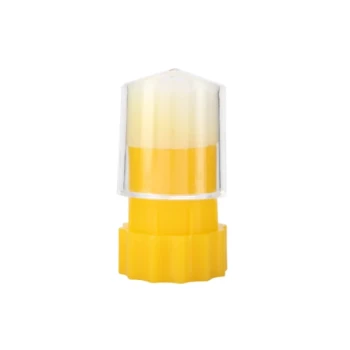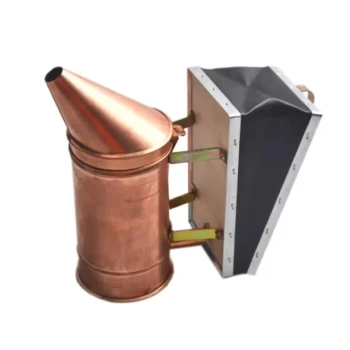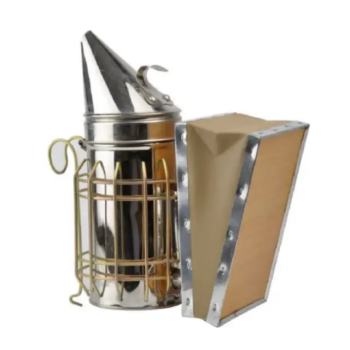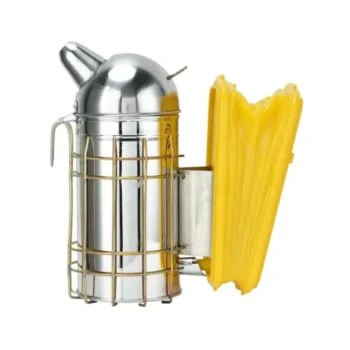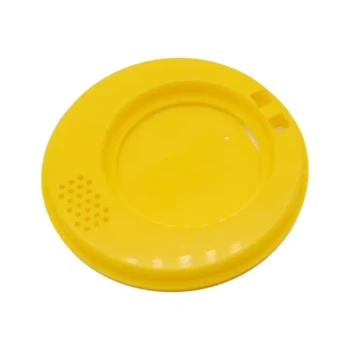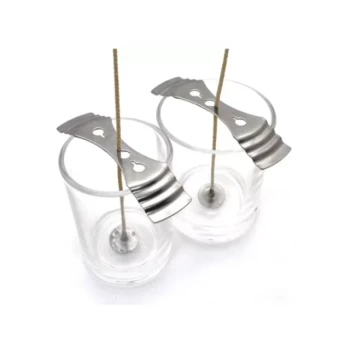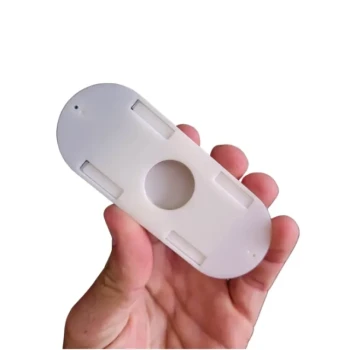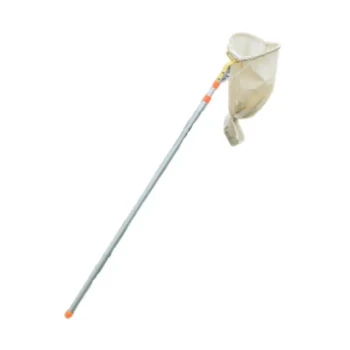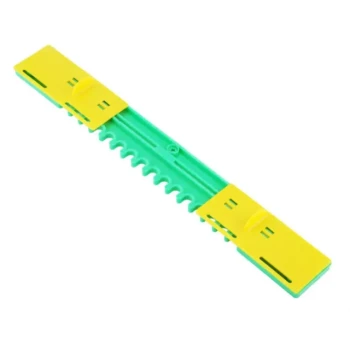The standard semen dose for the instrumental insemination of a honey bee queen is a precisely targeted volume of 8 to 10 microliters (µl). This quantity is not arbitrary; it is carefully calculated to provide the queen with enough viable sperm to fertilize eggs for her entire productive lifespan, effectively replicating the outcome of her natural mating flights.
The specific volume of 8-10 µl is the industry benchmark, but the underlying goal is more profound: to sufficiently fill the queen's spermatheca, ensuring she has the genetic resources to head a healthy, productive colony for several years. The dose is the means, but long-term viability is the end.
Why 8-10 Microliters Is the Standard
Instrumental insemination is a technical procedure designed to control honey bee genetics. The standard dose is the result of decades of research aimed at mimicking the biological results of natural mating, where a queen mates with 10 to 20 different drones over several flights.
Mimicking Natural Mating Volume
A queen bee on her mating flight collects semen from numerous drones. The 8-10 µl dose is a consolidated volume intended to approximate the total amount of semen she would naturally acquire.
This volume is typically sourced from 8 to 12 mature drones to ensure not only sufficient quantity but also the crucial genetic diversity that a healthy colony requires.
Filling the Spermatheca
Following insemination, the sperm travels from the queen's oviducts into a specialized storage organ called the spermatheca. Only a fraction of the total sperm—typically 5 to 7 million spermatozoa—successfully makes it into this organ for long-term storage.
Starting with a large initial volume of 8-10 µl ensures that the final count of stored sperm within the spermatheca is high enough to last for years.
Ensuring Long-Term Queen Viability
A queen's primary value is her ability to lay fertilized (female worker) eggs consistently. A well-filled spermatheca allows her to do this for two or more years.
If the insemination dose is too low, her stored sperm will run out prematurely. She will begin laying unfertilized (male drone) eggs in worker cells, a condition that will cause the colony to recognize her as "failing" and quickly supersede her.
Understanding the Trade-offs
Achieving the correct dose is a balance. While 8-10 µl is the target, both deviations and poor technique can undermine the process.
The Risk of Under-Insemination
Using less than 8 µl is the most common cause of insemination failure. A queen may appear to start laying well, but she will likely fail within a year as her sperm supply dwindles.
This leads to wasted time and resources, as the colony will have to raise a new queen, disrupting brood cycles and honey production.
The Danger of Over-Insemination
Attempting to use significantly more than 10 µl can introduce physical risks. It can cause semen to flow back out of the queen or, in severe cases, cause internal damage to her reproductive tract.
The 8-10 µl range is the established sweet spot that maximizes sperm storage while minimizing the risk of physical injury to the queen.
Semen Quality Over Sheer Quantity
The volume of the dose is meaningless if the semen itself is not viable. The semen must be collected from healthy, sexually mature drones (typically over 14 days old).
Poor handling, contamination, or using immature drones will result in a low sperm count and poor queen performance, even if the correct volume was administered.
Measuring Success Beyond the Dose
The insemination volume is a critical input, but success is ultimately measured by the queen's performance in the following days, weeks, and years.
Onset of Oviposition
As with naturally mated queens, a successfully inseminated queen should begin laying eggs (oviposition) within a few days to a week after she is introduced into a nucleus colony. Significant delays can be an early indicator of a problem with the procedure or her recovery.
Brood Pattern Quality
Once she begins laying, a high-quality queen will produce a solid brood pattern. This looks like a dense, compact area of eggs and larvae with very few empty cells. A "spotty" pattern indicates she is not consistently fertilizing eggs, a sign of poor mating.
Long-Term Performance
The ultimate test is longevity. A queen inseminated with a proper 8-10 µl dose of high-quality, diverse semen should remain the productive head of her colony for at least two full seasons.
Making the Right Choice for Your Goal
The precision of your insemination technique should align with the goals of your breeding program.
- If your primary focus is learning the technique: Start by mastering the mechanics with a consistent 8 µl dose. This ensures you can perform the procedure correctly before attempting to maximize volume.
- If your primary focus is producing top-tier production queens: Aim for the upper end of the range (9-10 µl) and be meticulous about sourcing semen from a diverse pool of mature, healthy drones.
- If your primary focus is troubleshooting queen failures: Investigate beyond dose volume. Assess the age and health of your drones, your semen collection hygiene, and the post-insemination care of the queen.
Ultimately, a precise insemination dose is the foundation upon which a productive and long-lived colony is built.
Summary Table:
| Key Aspect | Details |
|---|---|
| Standard Dose | 8 to 10 microliters (µl) |
| Drone Source | 8 to 12 mature, healthy drones |
| Target Sperm Storage | 5 to 7 million spermatozoa in the spermatheca |
| Primary Goal | Mimic natural mating, ensuring queen viability for 2+ years |
| Risk of Under-Dosing | Premature queen failure, colony supersedure |
| Risk of Over-Dosing | Physical injury to the queen, semen backflow |
Ensure Your Queen Rearing Success with Professional-Grade Equipment
Precision is non-negotiable in instrumental insemination. The correct 8-10 µl dose is the foundation, but achieving it consistently requires reliable, high-quality tools.
HONESTBEE supplies commercial apiaries and beekeeping equipment distributors with the professional supplies needed for successful breeding programs. From precise syringes to durable insemination instruments, our wholesale-focused operations provide the equipment that underpins genetic excellence and colony productivity.
Ready to elevate your queen rearing operation with equipment you can trust? Contact our team today to discuss your commercial or distribution needs and ensure every dose counts.
Visual Guide

Related Products
- Queen Bee Artificial Insemination Instrument Equipment for Instrumental Insemination
- Plastic Chinese Queen Grafting Tool for Bee Queen Rearing
- Professional Spring-Action Queen Catcher Clip
- Plastic Long Marker Device for Catching and Marking Bees Queen Bee Marking Tube and Cage
- Queen Bee Catcher Plastic Bee Marker Bottle with Piston Marking Tube
People Also Ask
- How is success of honey bee artificial insemination evaluated? From Oviposition to Long-Term Queen Quality
- What is instrumental insemination's role in bee breeding? Master Genetic Control for Superior Honey Bees
- What is the basic process of artificial insemination in honey bees? A Guide to Controlled Breeding for Superior Genetics
- What are the methods for controlling honey bee mating? Mastering Genetic Selection for Your Apiary
- What is the typical semen yield from a single honey bee drone? A Key Metric for Successful Queen Insemination




